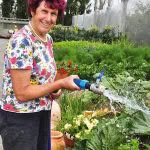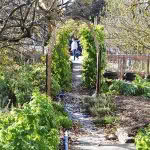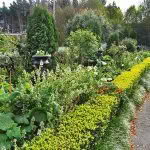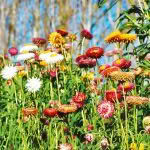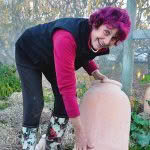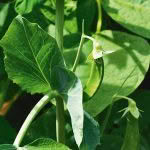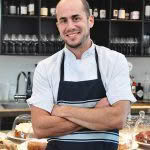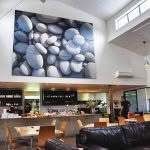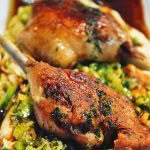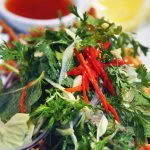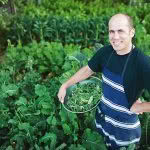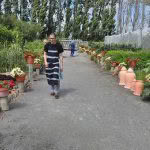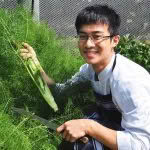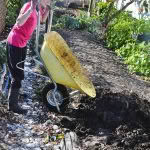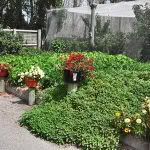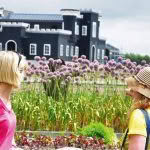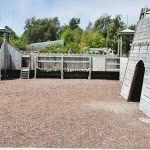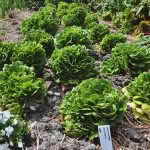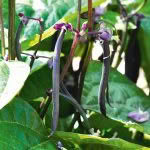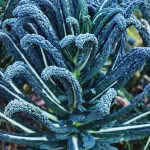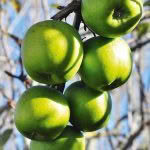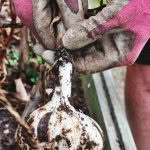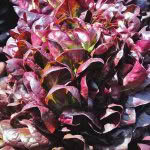How pink-haired Dot Smith made a veggie patch in a garden with no soil
- Dot calls herself an artist. “I see things differently to other people.”
- A typical design by Dot: flowers, fruit and veges running riot.
- The perennial border, inspired by Dot’s visits to English gardens.
- Strawflowers, one of Dot’s favourites when she was selling dried flowers.
- The gift shop started life as a shed for Neil’s tractors.
- Dot showing off a forcing pot (which creates a dark environment, ‘forcing’ the plant to grow more stems).
- Sugar snap peas
- Bevan Smith
- The dining room of Riverstone kitchen.
- Confit duck with cauliflower puree, sauteed Brussels sprouts & herb oil.
- Salt and pepper squid with Asian salad greens & nahm jim dipping sauce.
- Bevan says the garden is an extension of the kitchen. “Food is not a mystery- it’s just skill and execution and pleasure.”
- Chefs harvest all the produce.
- Harvesting fennel
- Adding cow manure from effluent ponds
- Flower pots for decoration in the vege beds.
- The castle sits behind the garden and cafe and is the realisation of Dot’s long-held dream home.
- When your house is a castle, the playground has to match.
- Butterhead Salanova descartes
- Purple beans
- Cavolo nero, the chef’s favourite.
- Granny Smith apples
- Elephant garlic
- Salanova red butterhead lettuce
This is a garden of no soil that supplies the award-winning Riverstone Kitchen with its fresh vegetables and fruit all year-round, and it’s a work of art.
Words & Images: Jenny Somervell
Additional Images: Fiona Andersen
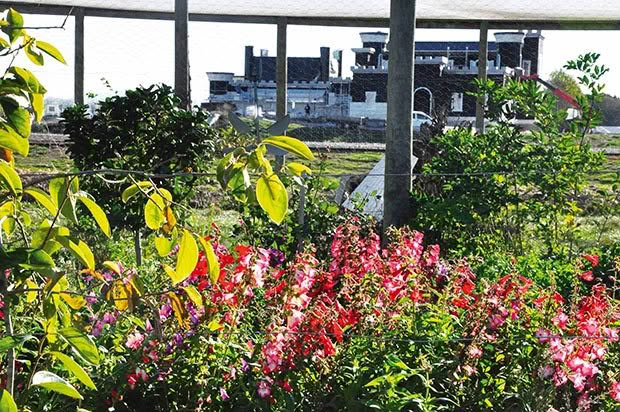
Who: Dot Smith & Bevan Smith
What: Riverstone Cottage
Land: 4ha (10 acres)
Where: Oamaru, 130km north of Dunedin
Website: www.riverstonekitchen.co.nz
Riverstone is in a pretty quiet part of the world. You’d think it might attract a couple of dozen cars a day, but it’s mid-week and the large car park is buzzing. We decide we’ll spend an hour here. Two hours later and we’ve hardly started. The property is a palette of artistic vistas. Everywhere you look, there are gardens, fruit trees and perennial beds, all liberally fertilised with cow manure and overflowing with produce and flowers in imaginative combinations. The scale is impressive. The gardener here doesn’t believe in tiddly little plots. There are large, raised beds and serious vegetable production on a grand scale. When a chef in starched white apron runs out, he’s cutting enough fennel to last our household for a month.
The evidence of an artist’s hand goes beyond the gardens. Beside the orchard, what was a huge farm shed is now a huge gift shop, colour-themed to show exhibit quality.
Smack in the middle, and almost at odds with the country, cottagey-style garden, is a large, minimalist-style, modern restaurant with floor to ceiling windows. It’s humming. The view out over the garden beds ends with Dot Smith’s famous castle and everyone is taking pictures. The castle is impressive, but I’m more interested in the artist behind the gardens and how she gets on with the chefs who ravage her garden on a daily basis.
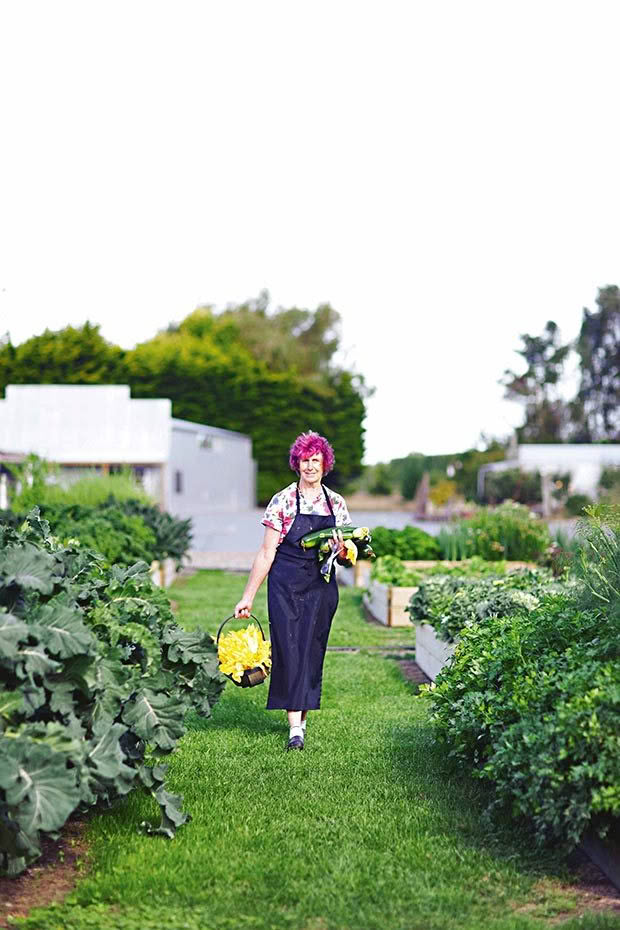
THE GARDEN ARCHITECT
Tracking down Dot Smith is like cornering a frisky calf. I eventually find her picking produce, clearly camera-shy, and she’s not happy to be disturbed. Later she tells me how a television documentary on their castle “blew them out into the public” to the point she couldn’t get anything done. “I’ve had to come to terms with that and realise for me it is every day, but for other people it is special.” Dot really doesn’t care for publicity. She’s just doing what she does because it’s in her, and has to come out.
“Everything is a form of art. I’m an artist. It took me a long time to accept who I am. It doesn’t matter what I look at, I see it quite differently to other people, even the wood stacked in a heap.”
Whatever Dot visualises she finds a way to achieve. That might be a castle, an extravagant henhouse, a gift shop, a moat, an aviary, a children’s playground.
“I am not the sort of person who sits around and thinks about things too much.”
Her passion for gardening is inherited, unbounded and started early. “I was brought up gardening – my mum was a great gardener.” The difference is in the scale. Instead of planting dozens of daffodils like most people, Dot plants thousands. “I don’t rush off to the dress shop, the shoe shop, I don’t drink, I don’t smoke, I cook my own meals but I want to plant daffodils. Thousands of them! I want people to look and say, ‘Oh my God, look at those daffodils! Aren’t they spectacular!”
Children are welcome – at their parents’ risk – in a solidly built, non-PC playground with a very conspicuous warning sign. Dot loves seeing the children looking at the peacocks and the animals. “When we get a minute and the boys are not so busy we’ll redesign the henhouse and put in a few different species of lovely hens, turkeys and geese. It’s about sharing. I’m always thinking of the kids in the playground, trying to do something different every year so they can see things grow.”
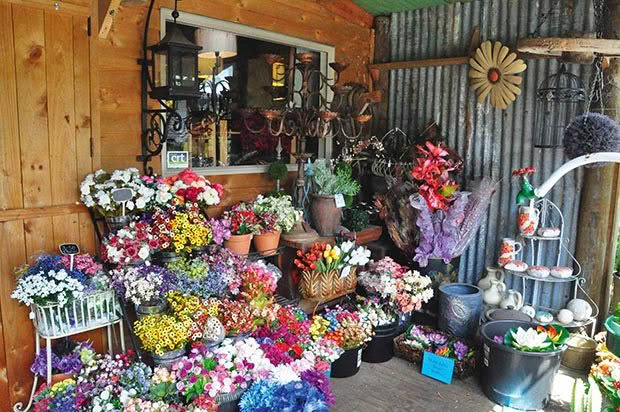
THE GARDEN WITH NO SOIL
Dot and her husband Neil bought this property in 1983 as a converted dairy farm, but it was once the path of the Waitaki River. While the land was being cleared of stones and ripped, the wind came and, in Dot’s words, “blew them off the planet.’ It was a far from ideal place for a garden. Dot planted pines and gradually built gardens around the original house, including beds of dried flowers which paved the way for the giftware business.
“Most people would choose a site with beautiful soil and put a garden in it. We had a paddock and we stuck a restaurant on it!” This means Dot gardens in a very different form to most people. It requires constant renewal of the soil so all the plots need vehicle access to take away waste and restore soil. Cow manure is supplied from the effluent ponds of the six dairy farms that Neil and Dot now have around them.
“All of it is used – there is never any spare.” Straw from the calf sheds is used as mulch once it’s aged and nicely broken down with urine and manure from the calves. Despite the volumes of goodness they add every year, by the end of the season Dot finds the plants are virtually sitting on gravel.
PUSHING THE BOUNDARIES
While Dot the garden architect is pushing the boundaries in the garden, her son Bevan is pushing the boundaries in his restaurant. When Bevan returned from overseas, Dot had the garden established and a lot of fruit trees. Bevan was fresh from leading the acclaimed ècco bistro in Brisbane, and he saw an opportunity for a contemporary restaurant at Riverstone, without limitations in space and size. The superior quality of fresh, organically-grown produce in Brisbane was crucial to his work. Bevan knew that if they grew their own produce themselves, it would be fresher and better.
Produce gardens were purpose-built to supply the restaurant, but Bevan admits there has been a bit of a learning curve in the garden-restaurant relationship. “It’s an uneasy alliance. The cook always thinks the gardener is holding something back. The gardener thinks the cook is out there to ravage the garden and pays no attention to what’s out there!” The relationship has grown with an understanding of what it takes to produce food and the time it takes. Bevan says he has learnt not to be so demanding as he has been in other kitchens where everything is at your beck and call.
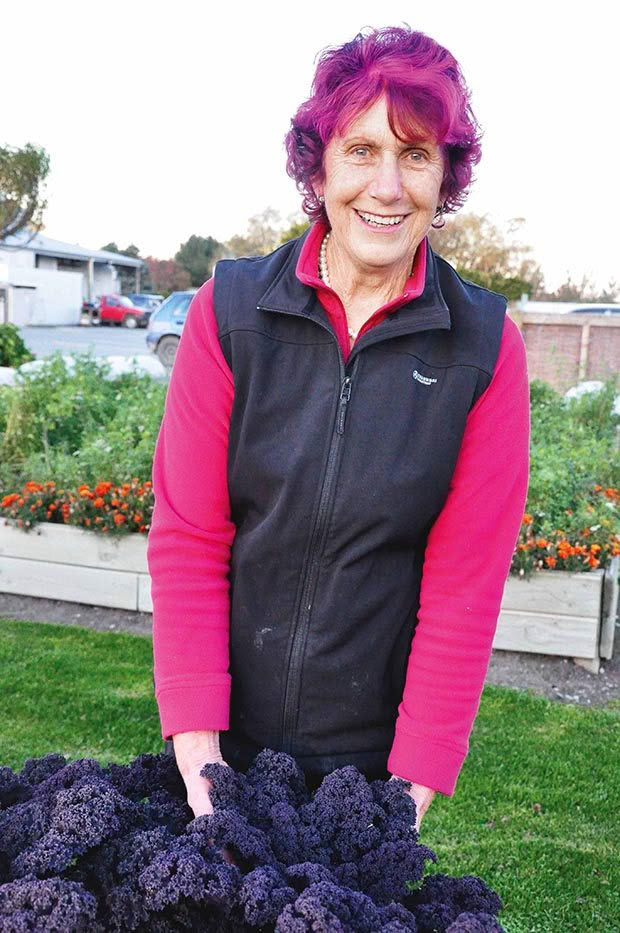
“(Usually), there is no connection to the grower other than the telephone and you can be quite draconian, just chopping and changing. “We had a wish list that we wanted but we’ve learnt that if something in the garden is ready, you have to use it. It won’t wait for you. When you scream for coriander, and it comes on, if you don’t use it you can look a bit of a goose.” Bevan and the boys in the kitchen do most of the harvesting at Riverstone. Sometimes, they don’t get it right and get into trouble for their poor work. “People used to taking stuff out of a box, coming into this environment, will mow the whole lot down. If someone is not used to picking cavalo nero, they will take the top out of it and it really holds plants back.”
The kitchen has had to come to an understanding of how plants grow. “Once you understand that, you can maximise what you get back from it, looking after the kitchen and the garden as well.” Bevan can – and does – change the menu overnight to use what is available. Over summer they will change every three weeks as stone fruit shifts in availability. The leanest time of year is spring but the rest of the year is jam-packed with different things coming on at different times: strawberries, cherries, stone fruit, pears, apples, leeks, kale, rainbow chard, rhubarb, and the list goes on.
HOW TO SHOCK YOUR GUESTS
Fully utilising the garden means pushing the boundaries of what people will eat. Everything has its season on the menu, either as a star piece, or sometimes snuck in undercover. Bevan will serve caesar salad with cavalo nero, beetroot with bits of curly kale, pureed and roasted cauliflower, or sautéed Brussels sprouts over duck. “For some people it’s the norm, for others it’s a bit of a shock. They say, ‘What are these strange looking things on my plate?’
“With traditional eaters you can have a bit of fun pushing boundaries without them realising, like something under or on top of a steak. I like to be able to influence a generation of locals. We’re not trying to be tricky. Just real people making real food, really flash, and above all, tasty.”
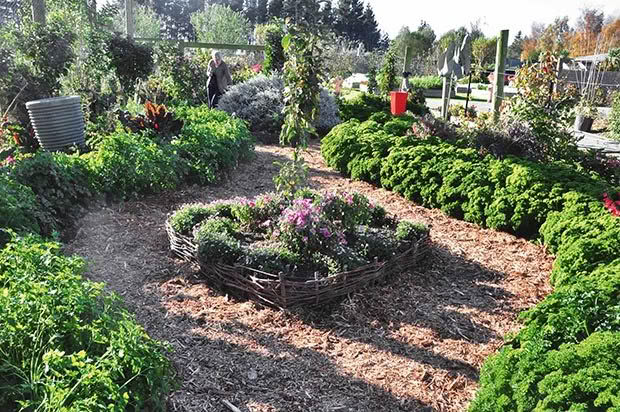
RED-AS-YOUR-HAIR JELLY
The restaurant is closed on Tuesdays and Wednesdays, and that’s when it is often used for jam-making. Dot loves cooking and is a strong advocate for food-bearing plants in the garden landscape. The jam-making side of the business started when she spotted a red pepper jelly in an English magazine and made it, then pointed it out to Bevan.
“Look at this jelly – isn’t it gorgeous! Would you like to sell it in your restaurant?”
“No mum, I wouldn’t,” was his flat reply.
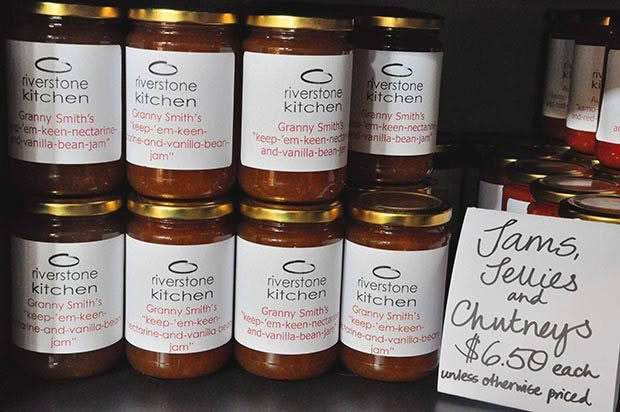
The preserves from Riverstone Kitchen.
Dot wore him down. She called it ‘Red-As-Your-Hair Jelly’, a play on her trademark pink hair, and sold it in her gift shop. It flew out the door. Today they sell 20,000 to 30,000 jars of jam a year, made with fruit and spices, and characterised by their wild names. There’s Granny Smith’s boozy-fig-jam, Bev’s bugger-the-birds-cherry-jam, Dot’s eat-me-in-a-kilt-real-Scots’-rhubarb-and-ginger-jam. “They toned the labels down a bit,” says Dot. “But the sillier the label, the more it sold!”
All of this success with food was obvious to Dot from the very beginning. “I didn’t know Bevan was a great chef,” she says. “He was always a very hungry child. I said to him, ‘There is only one thing you can be when you leave school ‘cos you’ll never feed yourself! You’ll have to be a chef!’”
DOT AND NEIL’S DREAM HOME

When she was living in what she calls a grotty old house in Warkworth, Dot dreamed of one day building a castle. “It was a dream, but why not? Everybody loves a castle. I’m creating a million stories!” Unlike most, Dot retained her childhood dreams and has now realised them. When the time came to build their own home, instead of down-sizing to a “little cottage by the rest home,” says Dot, she and Neil decided to build a castle.
One of their criteria was no shoes and no jerseys, meaning there will be no draughty rooms. The castle is over-insulated and topped up with underfloor heating and heated by heat exchange from the lake. It took three and a half years to get a permit. Today, Dot says she could write a book about the obstacles they’ve had to overcome, but she was never going to give up. “No, I just go to work every day and let it sort itself out.”
Love this story? Subscribe now!
 This article first appeared in NZ Lifestyle Block Magazine.
This article first appeared in NZ Lifestyle Block Magazine.
